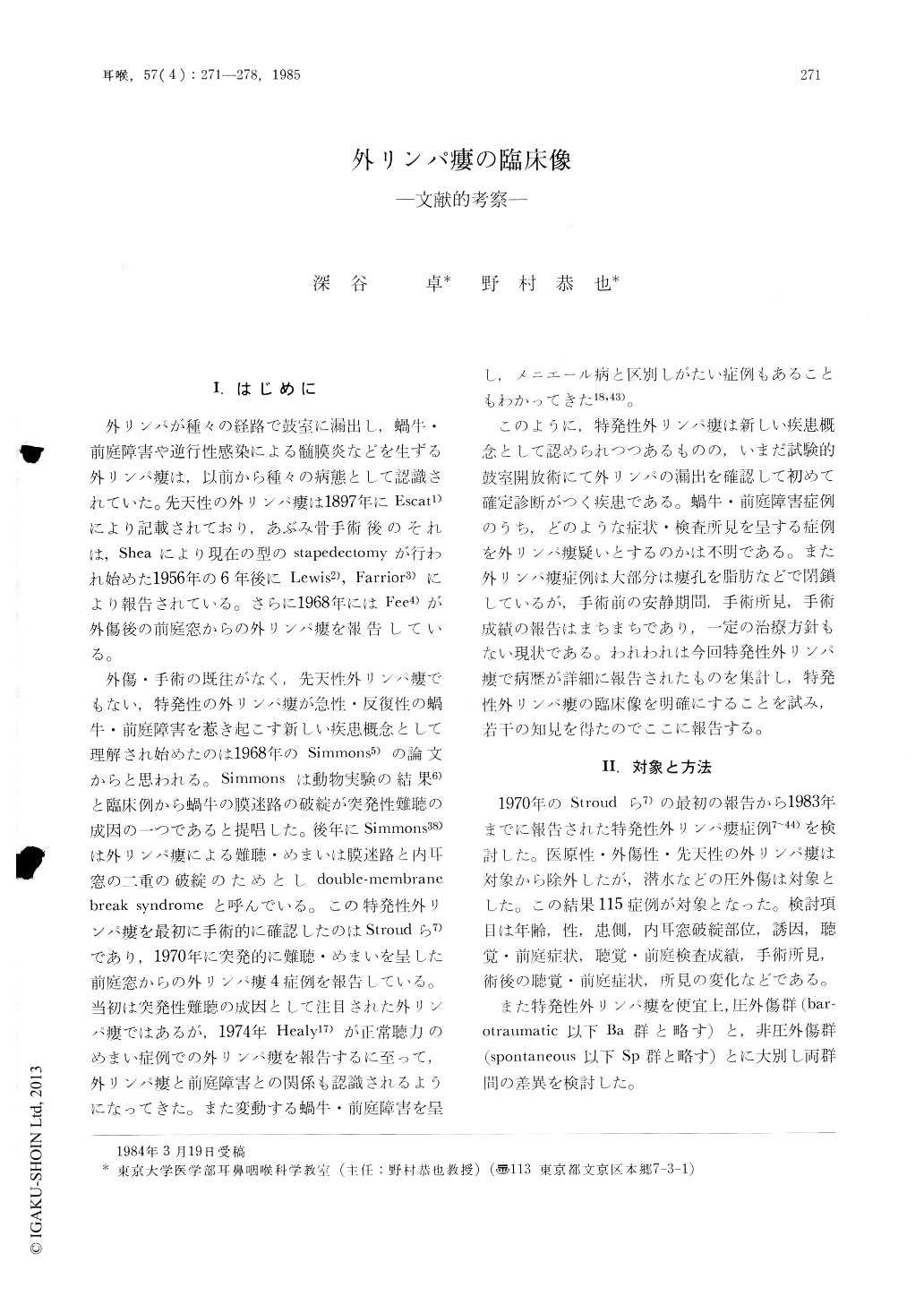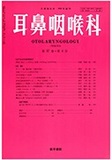Japanese
English
- 有料閲覧
- Abstract 文献概要
- 1ページ目 Look Inside
I.はじめに
外リンパが種々の経路で鼓室に漏出し,蝸牛・前庭障害や逆行性感染による髄膜炎などを生ずる外リンパ瘻は,以前から種々の病態として認識されていた。先天性の外リンパ瘻は1897年にEscat1)により記載されており,あぶみ骨手術後のそれは,Sheaにより現在の型のstapedectomyが行われ始めた1956年の6年後にLewis2),Farrior3)により報告されている。さらに1968年にはFee4)が外傷後の前庭窓からの外リンパ瘻を報告している。
外傷・手術の既往がなく,先天性外リンパ瘻でもない,特発性の外リンパ瘻が急性・反復性の蝸牛・前庭障害を惹き起こす新しい疾患概念として理解され始めたのは1968年のSimmons5)の論文からと思われる。Simmonsは動物実験の結果6)と臨床例から蝸牛の膜迷路の破綻が突発性難聴の成因の一つであると提唱した。後年にsimmons38)は外リンパ瘻による難聴・めまいは膜迷路と内耳窓の二重の破綻のためとしdouble-membrane break syndromeと呼んでいる。この特発性外リンパ瘻を最初に手術的に確認したのはStroudら7)であり,1970年に突発的に難聴・めまいを呈した前庭窓からの外リンパ瘻4症例を報告している。当初は突発性難聴の成因として注目された外リンパ瘻ではあるが,1974年Healy17)が正常聴力のめまい症例での外リンパ瘻を報告するに至って,外リンパ瘻と前庭障害との関係も認識されるようになってきた。また変動する蝸牛・前庭障害を呈し,メニエール病と区別しがたい症例もあることもわかってきた18,43)。
One hundred and fifteen cases with surgically explored perilymph fistulae were reviewed. They were subdivided, according to etiology, into barotrauma-tic (Ba) and spontaneous (Sp) types. Other types such as traumatic, iatrogenic and congenital were excluded in this study. There were 53 males and 44 females. The age ranged from 6 years to 68 years. The median age was 35.9 years. There were 37 right ears, 46 left ears and 6 both ears. No ear predilection was found in this study. The majority had a history of physical exertion or upper respiratory infection in the Sp type, scuba dive prior to onset in the Ba type. Onset of deafness was sudden in most cases, but there were 8 progressively deteriorated and 3 fluctuating cases. Preoperative audiologic and vestibular findings were of little value in deciding whether or not a fistula was present. In all cases, a fistula or perilymph seepage was found at the time of surgery. There were 35 oval window fistulae, 59 round window fistulae and 7 both window fistulae. Postoperative hearing improvements was prevalent in the Ba type and in cases which were explored within 30 days after onset. Insofar as vestibular symptoms, postoperative results were quite excellent in most cases.
We conclude that in a case of the suspected perilymph fistula, tympanotomy should be delayed few days, because of high incidence of the spontaneous recovery of deafness within this period, and that surgery should be performed within 30 days to get hearing improvements.

Copyright © 1985, Igaku-Shoin Ltd. All rights reserved.


